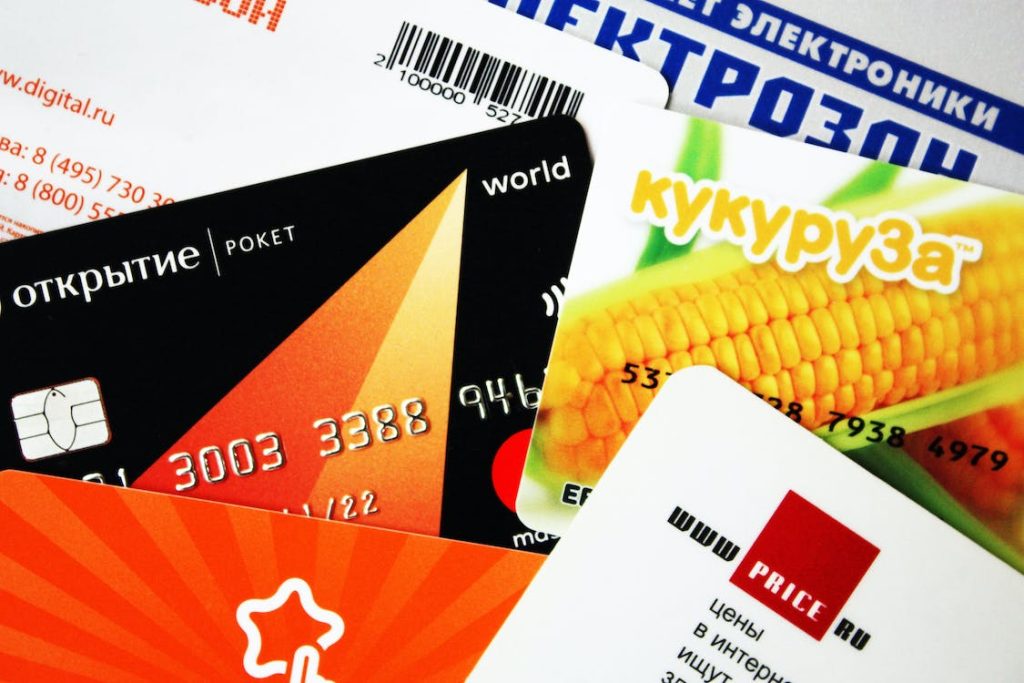It’s easy to feel as if you’re not a choice when you’re drowning in debt from credit cards, but that’s not the situation. Debt settlement is an option that allows you to negotiate a lower amount of debt to your lenders.
Instead of paying the entire amount due, creditors can agree to reduce the amount you owe. The less amount is known as”settlement” and can be repaid in a variety of ways.
It’s typically the easiest way to settle debts once you’ve been in debt for a long period of time and debt collectors are almost ready to give up and have agreed to accept less from you. Find out the specifics of how debt settlement works and if it’s an effective option for you.
What is a credit card debt settlement?
Credit settlement of debts with credit cards is an arrangement whereby you settle your debt in an amount lower than the amount agreed upon by the creditor and you.
One method of approaching debt settlement is usually through an experienced company. Although most of them are for-profit companies however, they could save you a significant amount of money because they’re experts at negotiating.
When you settle your debts, you typically do not make any payments towards your debt until an agreement has been reached. Instead, your funds temporarily are deposited into an insured trust account or special purpose account where they are accumulated ahead of the time you pay off. The debt settlement firm then makes an unintentional payment to your creditors in the amount of what what you owe.
Once a payment amount has been decided on, you’ll be on the right track to pay down your debt, or get it completely paid off.

How Debt Settlement Companies Charge?
The companies that offer debt settlement typically charge in two ways. The first is to charge a percentage of the total debt typically within the 13-20% range. For instance, if the company you choose is charging 20%.
If you have debts to credit card companies for in total, you’d then be owed by the company that handles debt settlement another $20,000. Another method of charging is to charge you the percentage of your bargained debt. Since the amount is less than the percentage they charge, the percentage charged will be higher, and sometimes as high as 35%..
If, in that scenario, your credit card debt of $100,000 is reduced to $50,000 (50 percent of the amount you originally were owed) then you’ll be owed by the company that negotiates debts $17,500.
Certain debt settlement companies could also charge monthly fees if you’re participating in their program. These are substantial amounts in any case, therefore it’s crucial to assess the level of success you’d achieve when you enroll in this kind of program.
Risks of Debt Settlement
If you are enrolled in the debt settlement program, you typically have to pay monthly for a period of 36 months. A lot of people don’t end up being able to pay the obligation and opt to drop out from the program. If this happens to you, then your debt will not be considered settled and you’ll be back where you were.
The most alarming thing is that even the time you set aside those funds the credit card companies aren’t bound to accept the repayment terms of the agency for debt settlement.
Additionally, the cost of interest and fees will likely to rise while you wait for negotiations. This means you could fall into a pit of unpaid payments, with no evidence of it, other than a bigger debt.
What to Look Out For
Some debt settlement companies contain untrue clauses in their customer agreements, so make sure you read your contract thoroughly prior to signing it.
For instance, a current fraud is to force you to leave the program if they fail to make one month’s installment and without refunding the money you’ve contributed to your account for debt settlement.
You should be cautious of any business that requires you to pay upfront for fees before work is completed. The Federal Trade Commission (FTC) prohibits this kind of practice in all debt settlement companies, however there are some loopholes that you can work around.
Also, make sure that the account you put your money into is insured by FDIC. This way, in the unfortunate event that your debt settlement firm ceases to operate your funds are fully secured.

Pros and Cons of Credit Card Debt Settlement
Credit settlement for debts on credit cards is a procedure in which you negotiate with the creditor in order to pay less than the entire amount due. The creditor accepts the reduced amount as a full payment and you are freed of the obligation. This could be a viable alternative if you aren’t able to cover your credit card debts however it may be a disadvantage.
Pros:
- It could reduce the amount of debt you have, which makes it simpler to pay your debt and avoid financial difficulties.
- It can also help lower your monthly payment, which can help you plan your budget and control your financials.
- In some instances it may also reduce or completely eliminate late fees and interest and can help reduce the burden of debt.
Cons:
- It can affect your credit score since paying off a debt is considered as an unfavorable mark on your credit report.
- It may also be more expensive in the long term, because you’ll be required to pay fees to the debt settlement firm or the attorney handling your case.
- If you’re current on your payments, lenders may not be able to bargain with you because they typically prefer working with borrowers who are delinquent.
- It could also take time before negotiating a settlement and while you wait, your lender could initiate collection actions, such as calling you or sending letters.
Can debt settlement damage your credit?
When you negotiate the process of debt settlement, you are at risk of destroying your credit score further. This is because the agency that handles debt settlement generally instructs you to stop paying your balances in the negotiation process. As a result, the payments will be reported by the major credit bureaus to appear a delinquent item in your credit reports.
Certain studies show that consumers’ credit scores decreases between 65-125 points throughout the process of debt settlement.
In the event of a catastrophe you could face a lawsuit brought against you in order to collect the money due. If the creditor prevails in the lawsuit, you could be liable to being able to have your wages slashed to pay off the debt.
Choosing a Debt Settlement Company
If you choose to work with a debt relief company there are a few things to keep an eye on to ensure that you’re dealing with a trustworthy one. First, search for firms that are licensed to conduct business in the state you reside. This helps narrow your options down from the beginning.
It is also essential to determine whether the debt settlement firm has a minimum amount of debt it will need. Most companies require that you have at minimum $7,500 to $10,000 of credit card debt. However, some work with lower amount.
Next, you must know the fee structure of the company. It may be helpful to look through the site and speak to an agent from customer service with any questions you have.
In general the more precise the website of the company is more detailed, the better service you’re likely to get. This is also true of the expertise of customer support.
Remember that no matter the information you’ve read or heard, it’s your responsibility to read your contract line-by-line to be aware of the specific conditions and the agreement.

Debt Settlement vs. Bankruptcy
Both bankruptcy and settlement of debt are distinct ways to deal with the same problem of financial debt that is too overwhelming. One of the major distinctions between the two approaches is how they impact the credit score of your client.
The typical debt settlement lasts for 7 years whereas bankruptcy can last for up to 10 years based on the type of bankruptcy you select.
The Chapter 7 bankruptcy remains in force for the full period of ten years. Although it can erase debt that is not secured however, it has specific income limitations. If you earn more than the allowed amount you will not be eligible. Even if you qualify be cautious about personal property that might be held to help pay the amount owed.
Chapter 13 bankruptcy Chapter 13 bankruptcy does not remain on your credit file for seven years, however it does not have a limit on income to be eligible. However, you’ll be required to pay to creditors for a period of up to five years.
The typical monthly payment that is based on your earnings and expenses which is divided between your creditors. After that your debts are as settled and you can begin the process of financial recovery.
Debt Settlement vs. Debt Consolidation
Debt settlement is the process of negotiation of the reduction of your balance with your credit card company, and paying it off in a lump amount. Debt consolidation is a completely different approach to ease the financial burden.
The process is getting the personal loan and then paying the majority (or certain) of your debtors using those funds. You will then have a single loan to repay instead of several payments.
In the ideal scenario, you’ll want to be able to get an interest rate that is lower than other credit cards and loans to can save money over time. It is common to get an individual debt consolidation loan over several years.
In comparison to the balance on your credit card and a regular installment loan repayment can be reassuring as you’re working towards an date for the end.
Credit Counseling
Credit counseling is a second alternative to help reduce the amount of credit card debt you have. Credit counseling companies can help you establish a low interest debt management plans to assist you in paying off your unsecure debt over time.
The programs for managing debt can reduce your monthly payments, so you can pay off the credit card debt fully. These programs usually harm your credit score pretty bad. If you’re trying to reduce the amount of debt you pay you might be interested in first a debt consolidation loan.
DIY Debt Settlement
The most effective method to negotiate the settlement of your credit card debt is to do it yourself. There’s no need for an expert to do the job for you provided you are aware of the procedure. If you negotiate with an individual creditor you can save money on charges.
Usually, you only have to contact the credit company to clearly and courteously explain the financial circumstances. You can ask them precisely what you want. The worst they could tell you is that they will not. Even if they say no you can always call them back and talk to another person. You could even repeat this process multiple times. Don’t be afraid to request to speak to the supervisor.
If you meet someone from the credit card business that will negotiate with you, ensure that you receive everything in writing. You can also ask them to send an email to you while on the phone, with all the details you’ve discussed.
Remember that if a lender agrees to forgive any portion of your debt in excess of $600, you’ll be required to pay taxes on income for the amount.

Secured Loans vs. Unsecured Loans
Based on your credit score and credit score, you may be eligible for secured or unsecured loans. A unsecure loan is generally a better choice since you don’t need to put up your own home as collateral.
A secured loan however will require you to use something like your vehicle or jewelry as collateral for the loan. This protects the lender in the event that you fail to pay your loan.
Debt consolidation is generally thought of as more risk-free than debt settlement however you should still be looking at your finances and determine the most effective way to pay off your debt.
Every debt relief program has a variety of advantages and disadvantages. Make sure that you’ve considered each option. The fact is, any decision you make is likely to last for at least several years It’s essential to make a choice that will benefit you today and in the future.
Balance Transfer Credit Cards
Credit cards for balance transfer typically come with a introductory 0% APR of up to 18 months or 12 months. This lets you concentrate on paying off the principal balance on your card instead of only the interest. It is a great method to cut down on interest rates if you have a high-interest credit or loan and have trouble paying off the loan.
Be aware that you generally require a high credit score to be able to get approved for credit cards with 0% balance transfer. It is therefore recommended to begin this process as early as you can instead of sitting around waiting for debt to build up.




